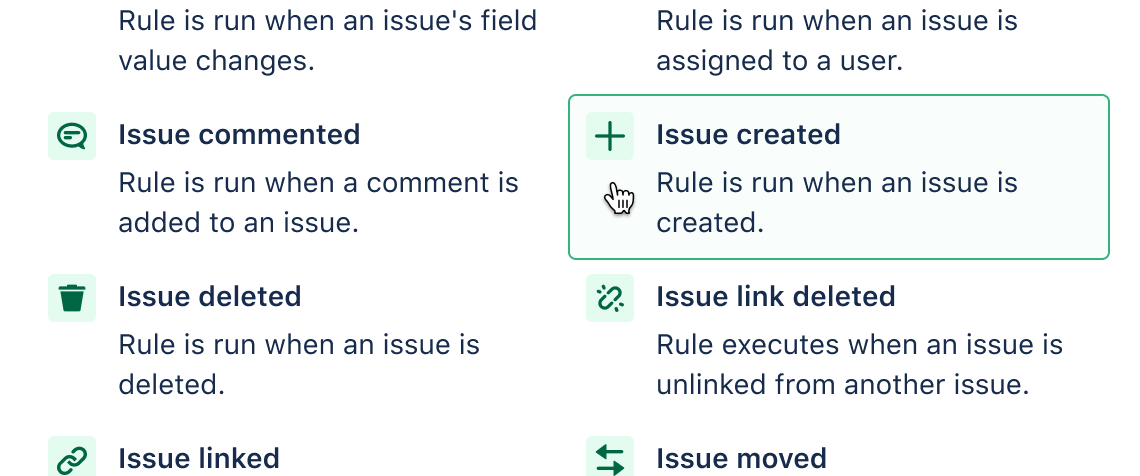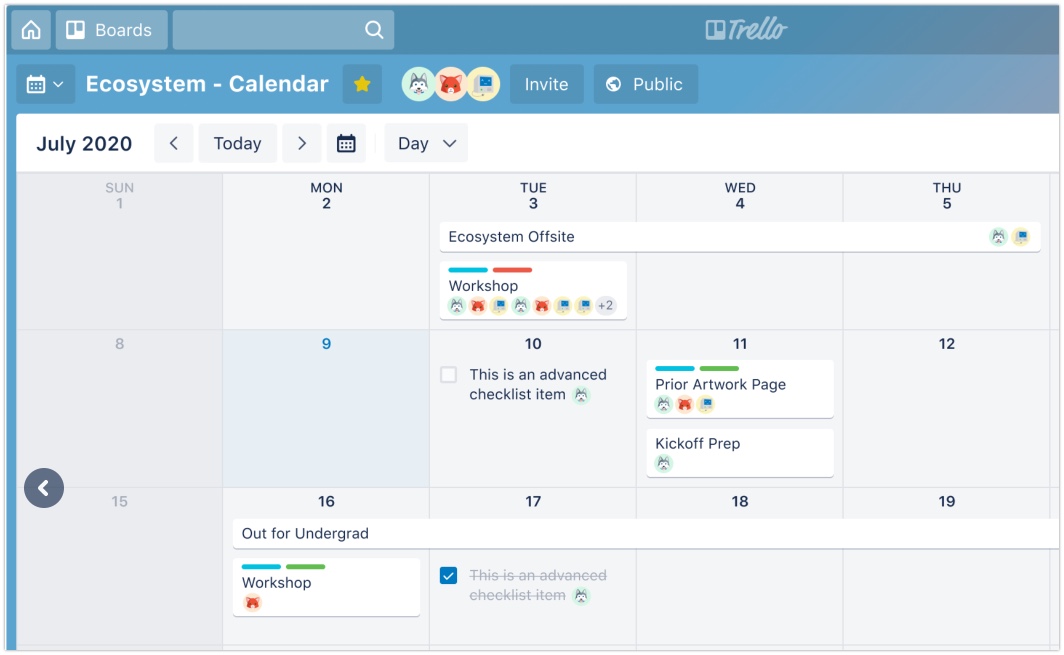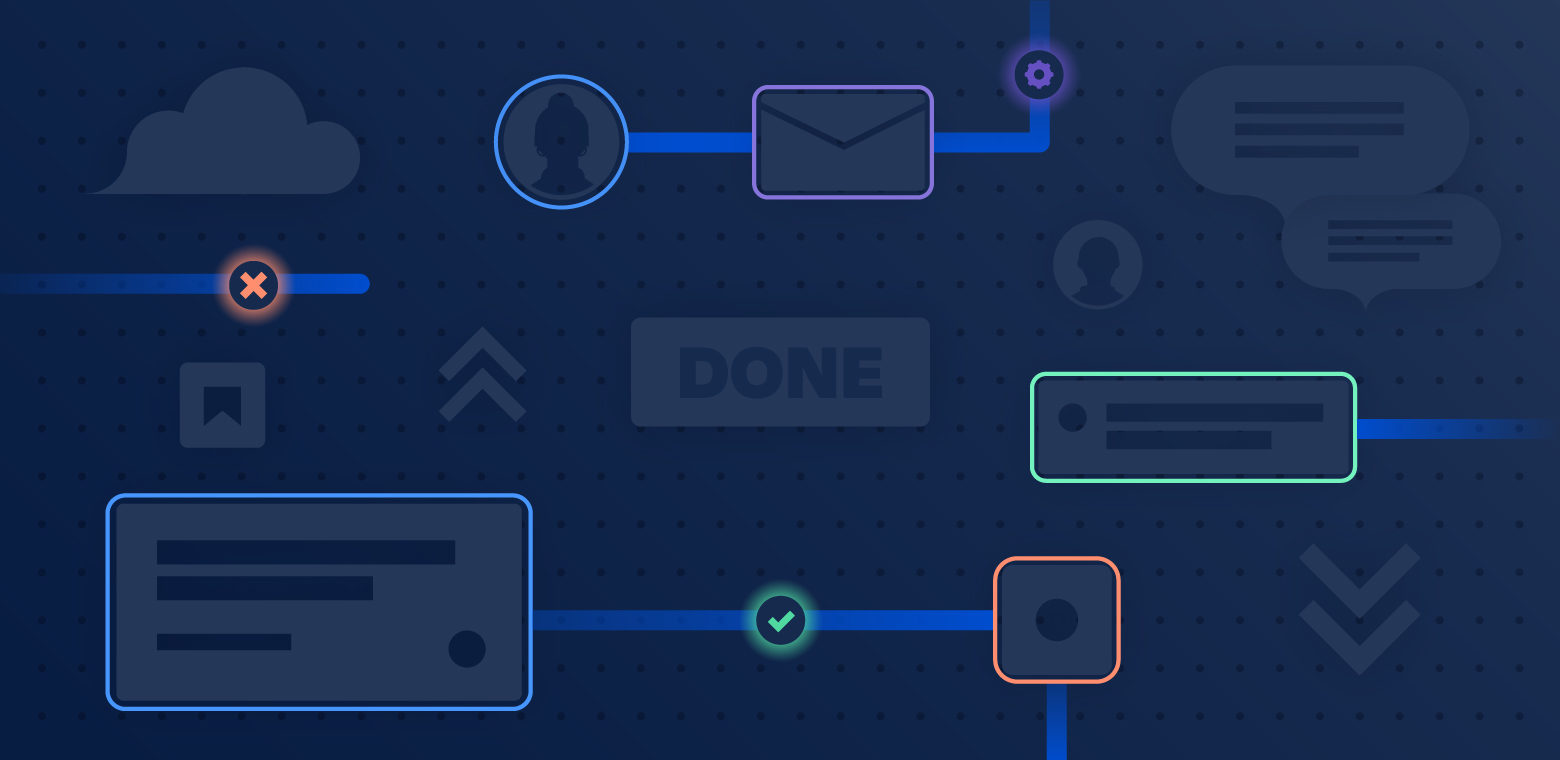For many employees, nothing is more soul-crushing than manual tasks like data entry. Updating customer information into a database is boring, repetitive, and time-consuming. Even more concerning is the fact that a single mistake during this tedious process can lead to a lost sale – all those repetitive two-minute tasks can pose significant risk to your productivity and workflow.
According to SnapLogic, data entry and the like costs businesses 19 working days per employee every year. If this rings true for you, we have good news: workflow automation tools perform manual assignments at the snap of a finger.
Workflow automation takes a traditionally manual project or business process and assigns it to a computer. It relies on rule-based logic to automate traditional pen-and-paper tasks.
Automated workflows save more than just a few minutes. Modern workflow technology also drastically increases efficiency and creates more time for high-impact projects, reducing busy work so that you can rest, be creative, and innovate.
Here are some common tasks where automation software can add a lot of value to your workflow.
1. Auto-assign issues to your team
You can use project management software, such as Jira, to auto-assign idle issues to your team members for better workflow.
Depending on the project management software you use, an issue could be a leave request form, a helpdesk ticket, or a project. Often, teams leave their unassigned issues to the discretion of their employees. As a result, these issues tend to slip between the cracks.
You can speed workflow development and auto-assign issues with Jira, a project management tool that includes many time-saving automation features. Here’s how:
- Choose your trigger. Triggers listen for events. For example, to manage your work issues, you can set Issue Created as a trigger. This way, whenever an issue is generated in Jira, automation will take care of it.
- Add your condition. Conditions allow you to narrow the scope of your rules. For example, you can determine whether an issue field meets your specific criteria.
- Add an action. Actions allow you to perform various duties, such as creating sub-tasks, sending a notification, and editing an issue.

Furthermore, suppose your team has more specific workflow automation needs, and you want to build more advanced custom automations. In that case, you can do so with a workflow app like Scriptrunner for Jira or Jira Misc Workflow Extensions. There are endless opportunities to create automations that fit your team’s varying needs in Jira. Take a look at this library of automation templates to help you get started.
2. Proofread your documents
Making a typo in a blog post, email, document, or website isn’t only embarrassing, but it can also hurt your reputation or cause financial damage.

A study by Website Planet found that:
- Webpages with typos lost almost double the number of potential customers than webpages without typos. This is because people are unlikely to buy products and services from your website if it’s filled with grammatical errors.
- Website visitors spent 8% less time on webpages with typos. One reason is that spelling mistakes cause people to leave your site.
Proofreading tools correct mistakes like poor vocabulary, incorrect grammar, and contextual spelling errors. These tools can do more than check spelling and grammar. They can also help optimize workflow by identifying key issues automatically. For example, Grammarly uses AI to help you:
- Identify weak phrasing, such as passive voice and overly complex sentences.
- Find synonyms of an existing word.
- Fix inconsistent style.
- Avoid word repetition.
3. Automate your scheduling
Scheduling is a common business process that is repetitive and tedious. Looking for the right time, sharing meeting links and essential documents in advance, and juggling deadlines all affect your workflow. On top of the mechanics of setting up a meeting, you also have to ensure a balanced schedule for your staff and make sure they aren’t overbooked. Automated workflows can help with this.

Get a birds-eye view of your month with Trello’s Calendar View, the more powerful version of Calendar Power-Up. The tool offers support for multi-day and full-day events, allowing you to view your Trello board’s cards with due dates and Advanced Checklist items. You can also:
- Create and edit cards, which are used to represent tasks and ideas.
- Drag and drop cards to organize your calendar, which adjusts due dates automatically.
- Set a weekly or monthly personalized schedule.
Once you get started in Trello, there are also plenty of other ways to automate workflows, like automatically moving cards, reviewing checklist items, or sharing work with teammates.
4. Sort and respond to emails
On average, an office worker spends 13 hours a week on emails. You can use workflow automation for some of that grunt work to regain those hours for more important projects. Managing email includes sorting, deleting, and sending – all manual tasks that you can automate.
Email workflow automation like Gmail lets you do the following:
- Use labels to sort incoming messages by subject, sender, or date.
- Snooze your emails when you’re busy so you can read them later.
- Use canned messages to automate responses for frequently answered questions.
- Schedule promotional emails to send at a time when your prospects are most likely to open them.
5. Connect different tools
Imagine that you’re sending an email to a colleague requesting a meeting to work together on a document. You have to compose the email, navigate through your calendar to search for a time that works for both of you, then dig through your folders to find the document in question, and finally return to your email to put it all together.
It may seem small, but all that context switching adds up and slows down productivity. A tool integration software with workflow automation can help you sync them all.
With Zapier, which allows you to build custom automations without any code, you can sync thousands of applications to build personalized workflows. These include everyday tools like Google Docs, Google Sheets, QuickBooks, Slack, Facebook Lead Ads, and 3,000 other apps.
Zapier uses Zaps – automated workflows between web applications – that are run through triggers and actions. A trigger is an event that a Zap initiates, and an action is a task a Zap performs.
6. Streamline your service desk
The emergence of COVID-19 led to a decline in IT support metrics. A service automation tool can help you minimize that deterioration.
According to MetricNet, the number of monthly help desk tickets has increased by 35%, while the average time to resolve them rose by 57%. What’s more, the cost of tickets has also increased by 29%.
If you use Jira Service Management for customer support, you can automate plenty of workflows and responses using JSM’s built-in automation. Plus, Atlassian’s Marketplace offers a wide range of workflow automation apps to meet more in-depth or unique needs with automation.
For example, Koji is an out-of-the-box chatbot that connects to Jira Service Management. Koji can:
- Answer frequently asked questions – it crawls the web to fetch the best solutions.
- Assist end-users with their tickets. It provides employees with their ticket status, allowing help desk professionals to prioritize tasks that require human input.
- Generate analytics to assess impact. Project managers can review client conversations to assess user satisfaction.
7. Post to social media
Leading brands like Walmart, Shopify, and Nike all use social media workflow automation tools. It’s essential to engage personally on social media, using your unique voice and creativity to catch your audience’s attention. But there’s no hard and fast rule dictating that you should do it manually. And that’s where automated social media tools can help.
While you dream up snappy copy and create eye-catching visuals, you can automate other, more tedious aspects of social media management. This includes scheduling posts, generating analytics reports, and curating content for republishing.
Workflow automation like Hootsuite or Buffer can help you post general updates, links, and other content by setting up a personalized schedule. Instead of switching between various apps and websites, you can use a single dashboard to handle everything, increasing efficiency and productivity while creating a smoother workflow.
How to decide when to automate
Workflow automation makes complicated business processes easier to manage, but there are times when it’s better to skip it. As a rule of thumb, avoid automating tasks that require human intervention. Here are some tips that can help:
- Don’t automate uncommon or unusual tasks. If some tasks aren’t time-consuming and routine, then automating them isn’t necessary.
- Don’t automate disaster recovery and failover. You need human input to tackle the threat of hacking, rogue employees, and other similar issues.
- Don’t automate highly complex business processes, particularly those with a multitude of moving parts.
Are you looking to automate more tasks? Atlassian’s workflow app collection has a variety of applications that can save you time.

